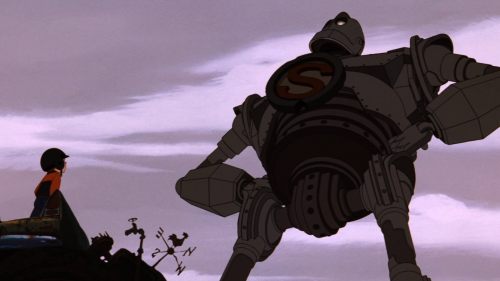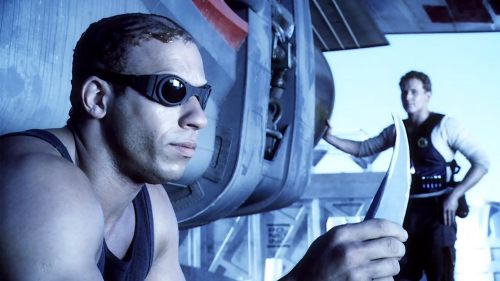NYFF Review: BILLY LYNN’S LONG HALFTIME WALK: Unreal Hyper-Reality At 120 Frames Per Second
We’ve reached a point of inseparability between Billy Lynn’s Long Halftime Walk and the surrounding conversation, and that’s going to work to its detriment. Ang Lee has chosen to tell a somewhat interesting story about soldiers returning home between tours and how their perspectives clash with those of the American people, but he’s chosen to tell it using a technology that, for the most part, doesn’t gel will with scripted cinema. Perhaps that conversational inseparability is warranted, given the tightly woven nature of its narrative and its form. In all honesty, there are minor instances when the movie’s High Frame Rate does absolutely come in handy (unlike the Hobbit films, where it merely exposes fake noses), but if there’s a declarative statement to be made about the technology, it’s that it does this film a disservice, and that’s putting it mildly.
Billy Lynn’s casts relative unknown Joe Alwyn as the titular character, a soldier deemed a hero and unwitting celebrity after his exploits in the Middle East find their way on camera. Everyone adjacent to Alwyn is played by a famous face, and he has the appropriate reverence for them, from Garrett Hedlund’s fiery Sergeant in charge of his Bravo division, to Vin Diesel’s fallen philosophical Bravo leader, to Steve Martin as the owner of the Dallas Cowboys (whose Thanksgiving halftime show is the venue for his ‘walk’), to Chris Tucker as a manager trying to get him a movie deal, to Kristen Stewart as his sister and his reason for enlisting in the first place. It’s an all-star cast, punctuated with great performances across the board. Alwyn expertly balances the weight of having seen life end before his very eyes with the frivolity of trying to get laid back stage. Hedlund’s turn brings America’s post-Vietnam cinematic gusto to the forefront, his caricatured drill sergeant routine imbued with a conflicted moral standing. Stewart’s physically scarred Kathryn attempts to help Billy come to terms with his emotional scars through desperate pleas masked as contempt for the Bush administration. And Vin Diesel is perfectly cast as an American soldier who looks to the more ‘mellow’ aspects of Hinduism for guidance, as he tells each of his soldiers, individually, that he loves them. But what ends up marring these performances is the technology itself, and that borders on unforgivable.
At 120fps, at a resolution of 4K and brightness about five times what we’re used to in order to account for the 3D, the dichotomous effect on cinematic ‘reality’ is noticeable from the get go. While the seams become more visible, more obvious, exposing visual texture as light falling on a made-up face (“too real” as some have put it), it renders physical movement awkward and seemingly sped up, but its effect on the human element of movie-making is where it truly falters. Where the lack of artifice takes center stage for the elements of production, the performances begin to feel artificial in turn. While video game cut-scenes elevate pixels into recognizable human forms, to say that the film is ‘video game-like’ is by no means a compliment. In fact it’s a step down in that regard, as every movement and every welling up of an actor’s eye feels like a calculated endeavor, programmed to take a specific shape, as if we’re watching the process of acting as opposed to a performance itself. This doesn’t render the technology inherently bad, mind you; Mackenzie Leigh’s Faison, a cheerleader who gets frisky with the virgin Billy at the Cowboys game, belongs in this 120fps world. Her over-the-top, artificial sincerity needs to feel calculated, as does her veneration for Billy’s armed exploits, disguised as what she claims, or perhaps even believes, to be divinely inspired romance. But she’s one character among many, in a story that absolutely attempts to unearth human sincerity within a culture constructed around a Military Industrial Complex.
If we’re talking about artificiality taking center stage, then the movie’s biggest success is the halftime show itself, featuring a performance from Destiny's Child. It lasts a mere ten or fifteen minutes, and you never actually see Destiny's Child, but the film’s commentary on the superficiality surrounding the heroic treatment of America soldiers comes to a head alongside explosive exploitation of their martrydom that triggers their PTSD. The show feels like the staged production that it is, and at various points in the film that same artificiality is extended to the people in the stadium as they sit alongside these soldiers, treating them either with scorn or with religious worship, never once pausing to consider their humanity or individuality. But again, these are minor instances of the technology having a positive impact on the narrative. Otherwise, it’s monumentally distracting even once your eyes get accustomed to it, and it reduces the film’s depictions of realistic violence (used to highlight its glorification by citizens versus its gory, harrowing nature that only soldiers experience) to nothing more highly-detailed visual effects exhibitions, as prop blood and human bits become noticeable even from far away. Not only does HFR highlight the artifice, it removes the artistry in the process.
Another major problem with a frame rate as high as 120 (you’ll notice this on large TV screens that have ‘motion smoothing’ on, i.e. high refresh rates) is what it does for parts of the frame in soft focus. Part of the job of directors and cinematographers is to direct the attention of the audience, and at the 24 frames per second we’re used to, things that are out of focus are most often just that – elements we don’t focus on, either because they’re unimportant or they’re meant to be part of the backdrop. In Billy Lynn’s however, this ceases to be, as even out-of-focus elements begin to feel like active parts of the frame that demand our attention. Again, this isn’t inherently bad, but the film never takes advantage of it in blocking and shot construction. In fact, it does the opposite. At one point in the film, Billy has a serious, dramatic conversation about his future when a football player with the number 69 on his jersey runs around in the background as if he’s meant to be noticed (he isn’t). Don’t pretend like you’re too mature to be distracted by that.
Outside of its frame rate follies, Billy Lynn’s Long Halftime Walk does certainly present a perspective on American soldiers, albeit a rather direct one. Its military characters all have inner lives, and interact with camaraderie and boisterous boyishness, and spending time with them is a joy when the scenes are long enough for your eyes to adjust. The film demands that we listen to what these people really have to say, their measured press conference responses interrupted by their ‘real’ answers presented in stark hues of grey that only they can hear. And while the film most certainly allows them to present, in whatever way they can, their objections to the war they’re fighting, these feelings exist in tandem with the hyper-masculine militarism that makes them not only complete, complex characters, but likable and interesting in the first place, both as individuals and as a unit.
There are longer conversations to be had about 120fps, how it mostly doesn’t work in scripted cinema given the established conventions of lighting production design and even acting, the exceptions where it could work, and the other forms of entertainment where it might come in handy (sports, porn, and sports porn). I can’t help but wonder how the film will play without it, if there are plans to screen it as such. It doesn’t feel like it has a coherent through-line regarding what it wants to say, and its individual parts are far greater than the whole when they aren’t an absolute eye-sore, but it’s nice to see Ang Lee return to making a film that feels American to its core. His non-American perspective on American iconography is as boldly direct here as it was in Brokeback Mountain, but the film is far more experimental than it is narrative, even though its contents are simple. That experiment detracts far more than it adds, which is unfortunate, especially in a film about people trying to understand what they experienced when so few outside their circles treat them as complete humans or their experiences as real. The film presents the story of its soldiers as a behind-the-scenes DVD feature to a movie we’ll never see.



